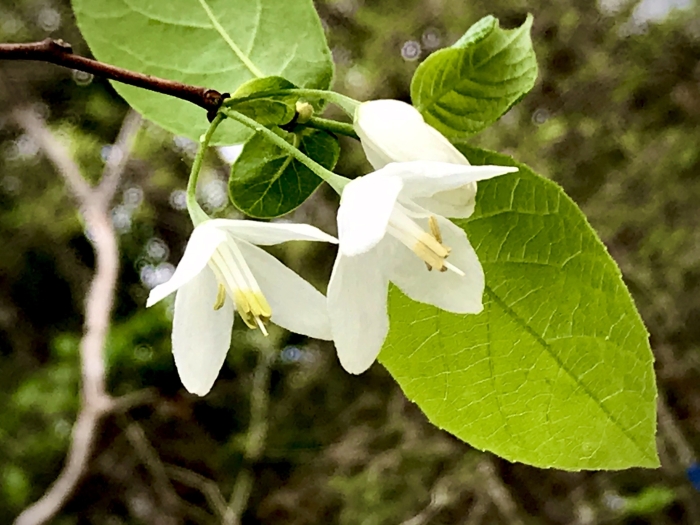Two-Wing Silverbell
(Halesia diptera)
Two-Wing Silverbell (Halesia diptera)
/
/

© Laura Clark
CC BY 4.0
Image By:
© Laura Clark
Recorded By:
Copyright:
CC BY 4.0
Copyright Notice:
Photo by: © Laura Clark | License Type: CC BY 4.0 | License URL: http://creativecommons.org/licenses/by/4.0/ | Uploader: lauramorganclark | Publisher: iNaturalist |










































Estimated Native Range
Summary
Halesia diptera, commonly known as Two-wing Silverbell or Two-winged Snowdrop Tree, is a deciduous shrub or small tree native to floodplain forests, moist slopes, and along streams in the southeastern United States, from South Carolina to Florida, and to eastern Texas. It typically grows to a height of 13–26 feet (4–8 meters) with a similar spread. The Two-wing Silverbell is notable for its attractive, bell-shaped white flowers, 0.8-1 inch (2-2.5 cm) long, which bloom in clusters of 3–6 in late spring. The distinctive fruit is a dry drupe with two lateral wings, setting it apart from other Halesia species with four-winged fruit. The foliage turns yellow in the fall, adding seasonal interest.
The Two-wing Silverbell is valued for its ornamental flowers and is often used in residential landscapes, native plant gardens, and along woodland edges. It is relatively low-maintenance, requiring medium amounts of water and thriving in a range of soil types, though it prefers well-drained, acidic soils. It can tolerate both full sun and part shade, making it versatile for various garden settings. While it is not commonly afflicted by serious pests or diseases, it can occasionally suffer from leaf spot or canker. Gardeners should be aware that the fruit can be messy if trees are planted near walkways or patios.CC BY-SA 4.0
The Two-wing Silverbell is valued for its ornamental flowers and is often used in residential landscapes, native plant gardens, and along woodland edges. It is relatively low-maintenance, requiring medium amounts of water and thriving in a range of soil types, though it prefers well-drained, acidic soils. It can tolerate both full sun and part shade, making it versatile for various garden settings. While it is not commonly afflicted by serious pests or diseases, it can occasionally suffer from leaf spot or canker. Gardeners should be aware that the fruit can be messy if trees are planted near walkways or patios.CC BY-SA 4.0
Plant Description
- Plant Type: Tree, Shrub
- Height: 20-30 feet
- Width: 20-30 feet
- Growth Rate: Moderate
- Flower Color: White
- Flowering Season: Spring
- Leaf Retention: Deciduous
Growth Requirements
- Sun: Full Sun, Part Shade
- Water: Medium
- Drainage: Medium, Slow
Common Uses
Bee Garden, Bird Garden, Butterfly Garden, Edible*Disclaimer: Easyscape's listed plant edibility is for informational use. Always verify the safety and proper identification of any plant before consumption., Hummingbird Garden, Low Maintenance, Showy Flowers, Street Planting
Natural Habitat
native to floodplain forests, moist slopes, and along streams in the southeastern United States, from South Carolina to Florida, and to eastern Texas
Other Names
Common Names: Two-Winged Snowdrop Tree
Scientific Names: , Halesia diptera, Halesia diptera var. magniflora, Halesia reticulata, Mohrodendron dipterum, Styrax latifolius, Carlomohria diptera, Mohria diptera,
GBIF Accepted Name: Halesia diptera J.Ellis